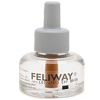|
Just like children, your pets can experience separation anxiety. Separation anxiety in pets is more common than you may well think, taking place in approximately 10%-15% of pets. Both dogs and cats are at the beck and call of the condition.
What's separation anxiety?
When a pet has separation anxiety, they demonstrate signals of stress from a fear of being away from their owner. They may display it in any quantity of methods. Whining and howling during the day, scratching at windows and destroying items in the home. Your may even notice that your housetrained pet might be relieving themselves inside when you're gone. These indications of stress aren't healthy for them and can be disastrous to your place.
Reasons for Separation Anxiety
There might be masses of reasons that may trigger separation anxiousness in pets. Some examples are:
Prior desertion or Abuse - Being deserted or abused by a prior owner. If you purchased them from an animal shelter it's very important to realize your dog's history.
Change of Schedule - spending more time off from home and your pets may lead to separation stress. If your roles all of a sudden needed you to spend more hours at work, or when your kids return to college are one or two illustrations.
Change of Possession - Dogs that have been passed from home to home.
Signals of Separation Anxiety
When identifying separation foreboding, there are a few signs to have a look for. A few of them are more common than others, examples are:
reoccurring following of owner or companion animal.
- Over the top greetings when you return home from work or running errands.
- Hiding and sulking when the owner is ready to go.
- Obstructing of door as owners attempt to go.
- Urinating or defecating in the house when they're left alone (for house-trained pets).
- Unbecoming gnawing or scratching of items in the house.
- Incapability to eat until the owner returns.
Too much grooming, especially in cats, causing bald spots (rare).
- Digging and scratching all your windows and doors when you're not at home.
How are you in a position to help your pet?
- Say short goodbyes to your dog every day.
- Leave something behind that smells like you. A shirt or old pair of shoes.
- Provide safe entertainment like strong nibble toys and bones. Be sure to select toys and bones that are safe and sturdy. Some shouldn't be left without supervision.
- Constrain your pet to a smaller area. Some dogs feel safer in smaller areas.
- Teach your dog to be tranquil. It obviously isn't coming natural to him. When you see your dog getting excited ask him to sit. Wait a touch and then give the dog a treat to re-enforce good behaviour.
- Leave a radio or a TV on when your pet is left alone in the house.
- When leaving or returning to the house, leave a ten-minute opening where you do not pay any attention to your pet.
- Consider a relaxing supplement or stress wrap.
|






